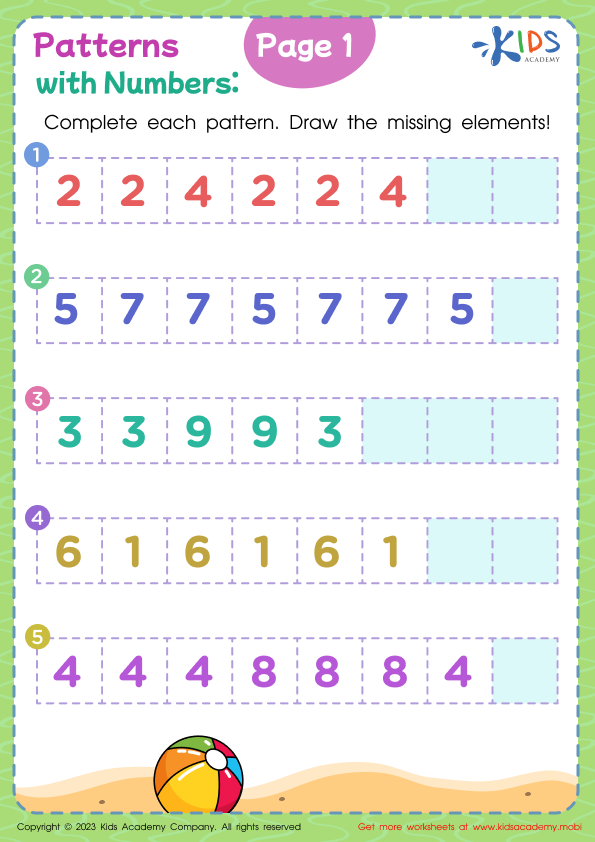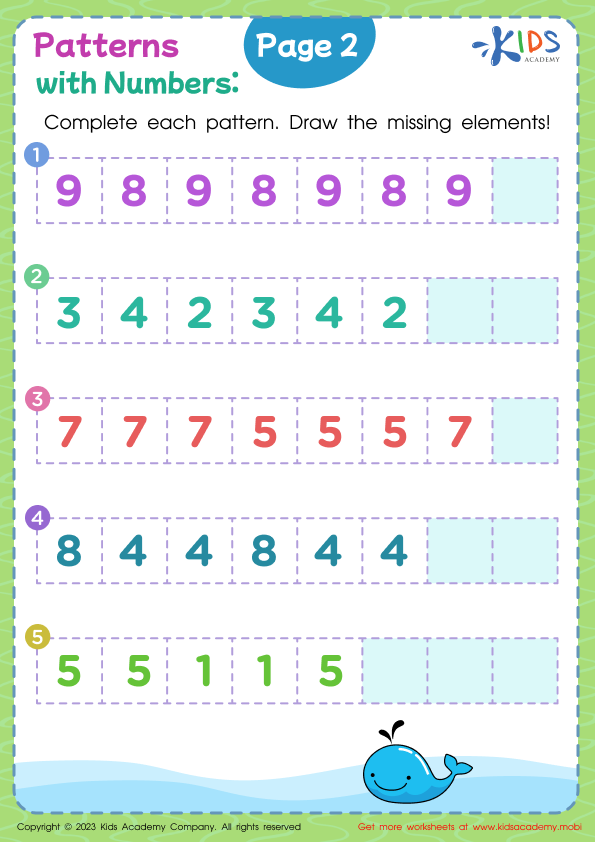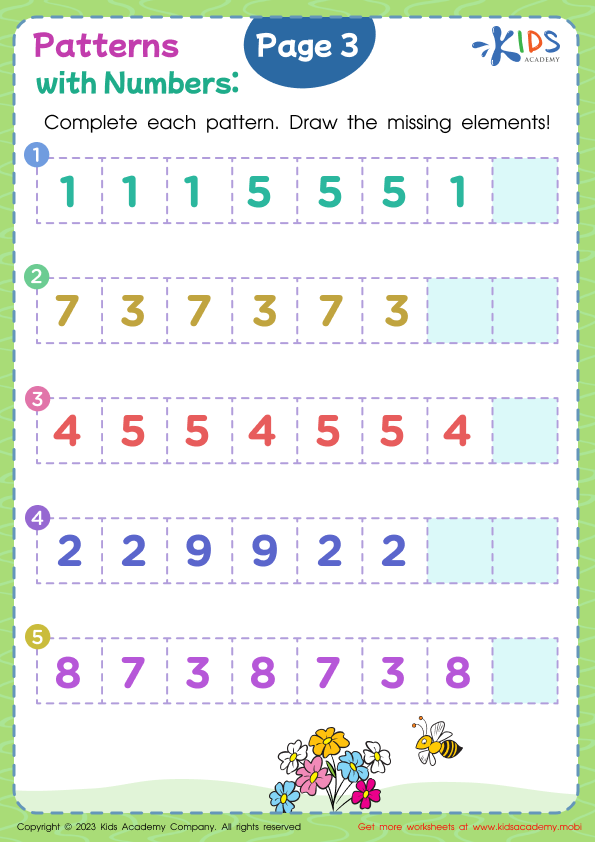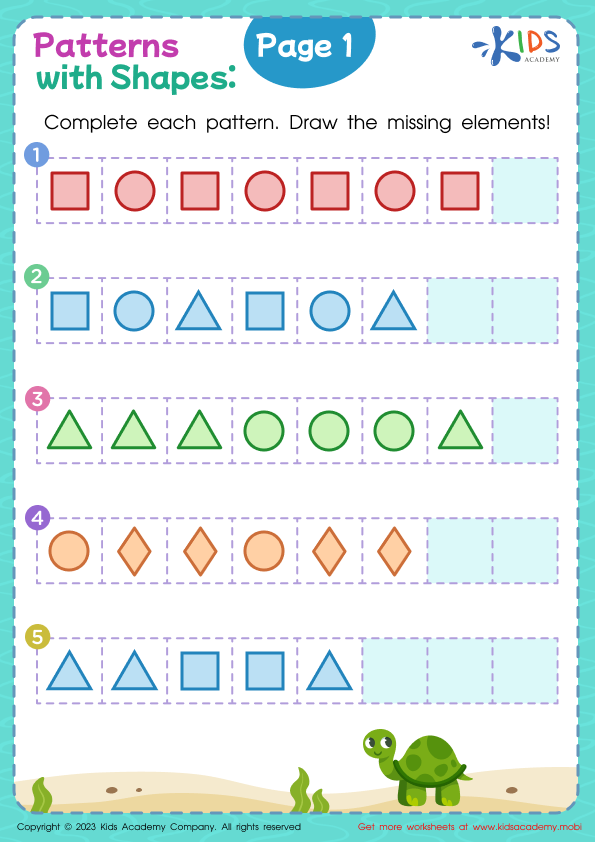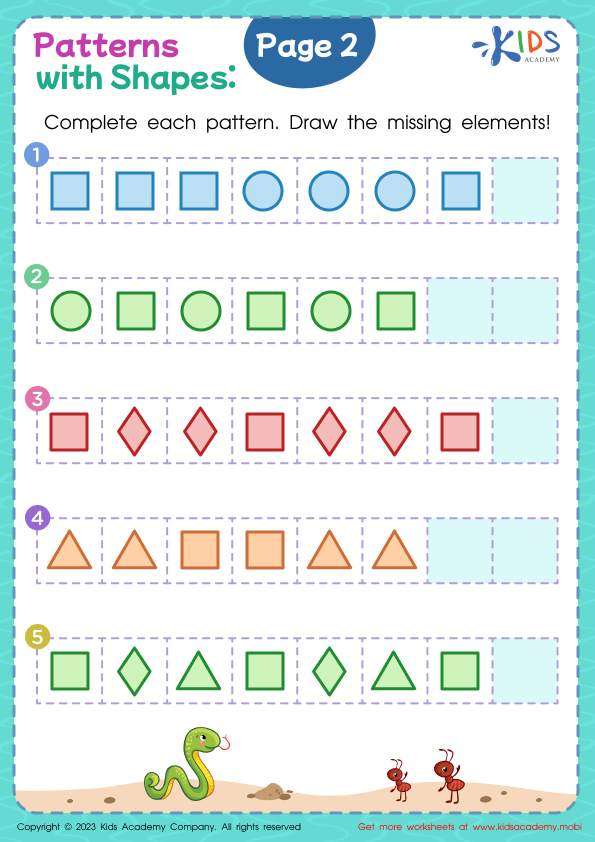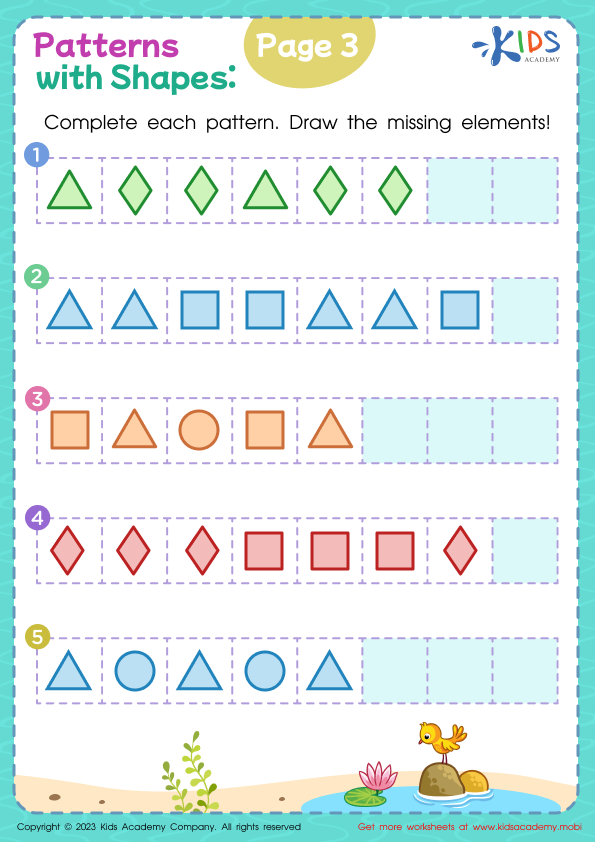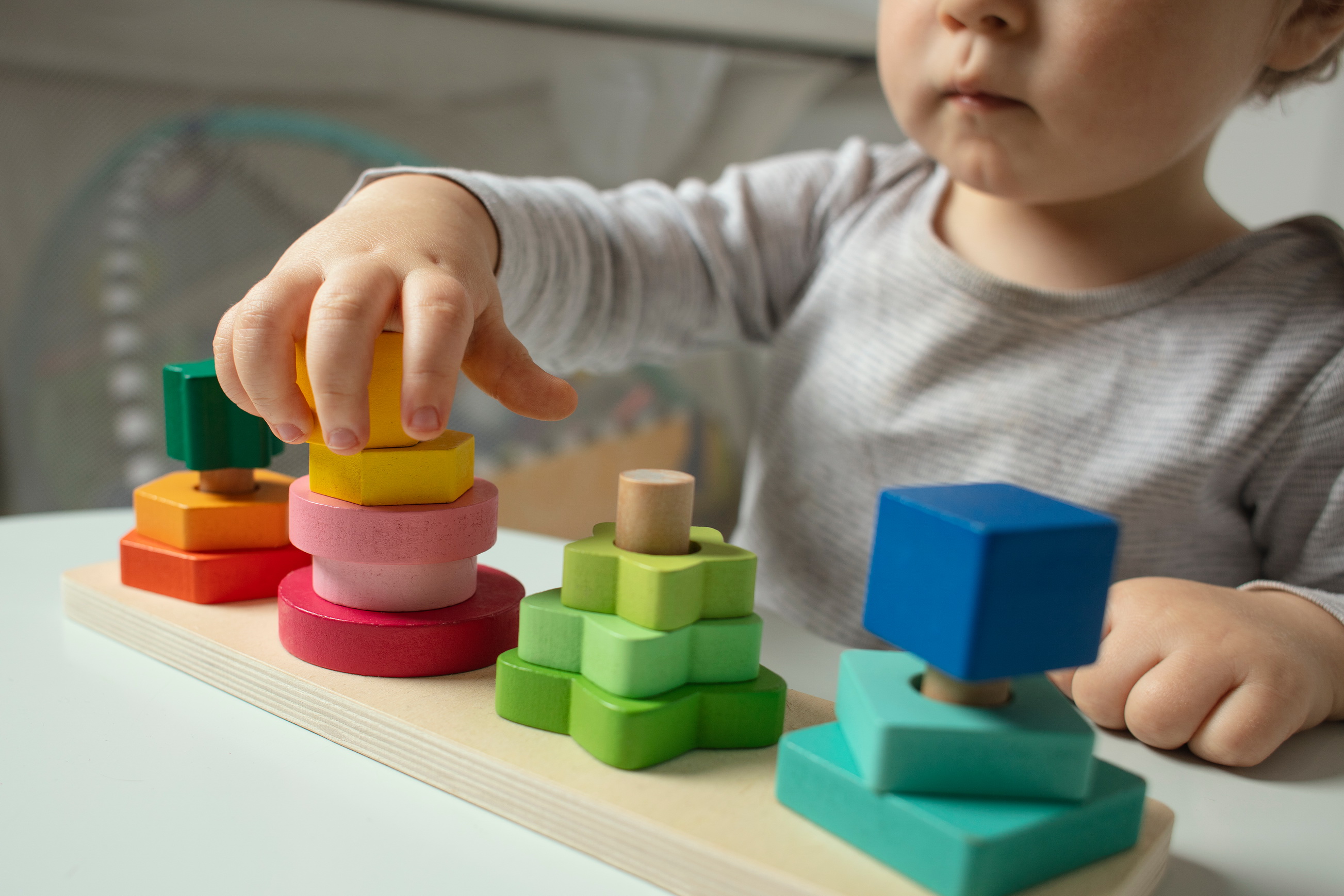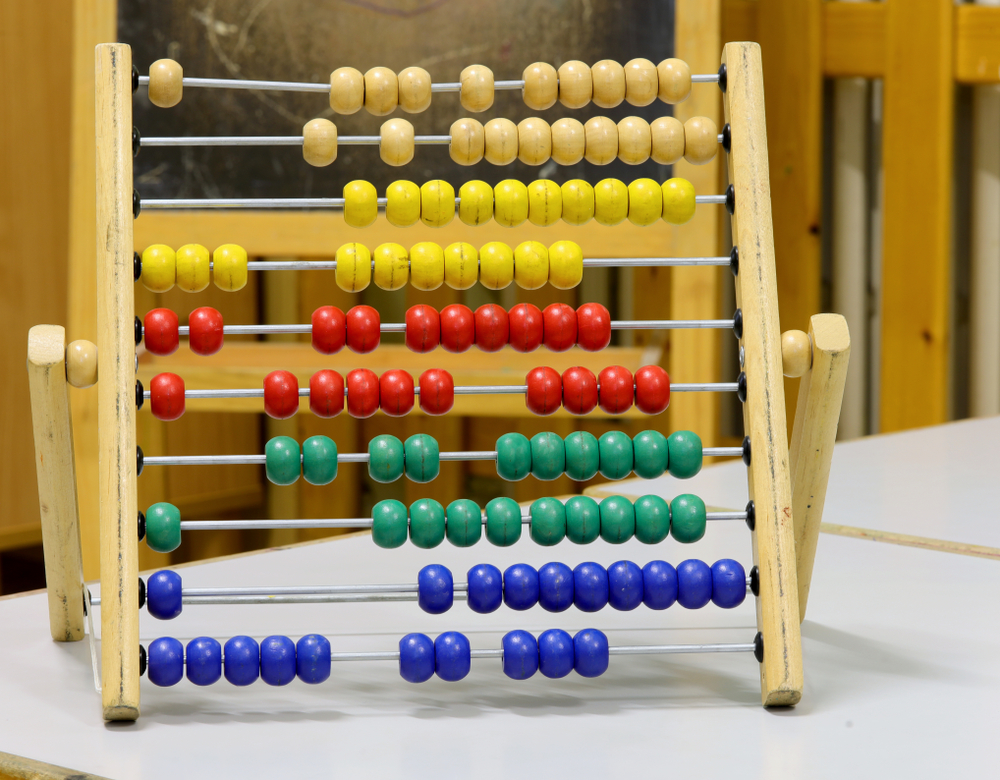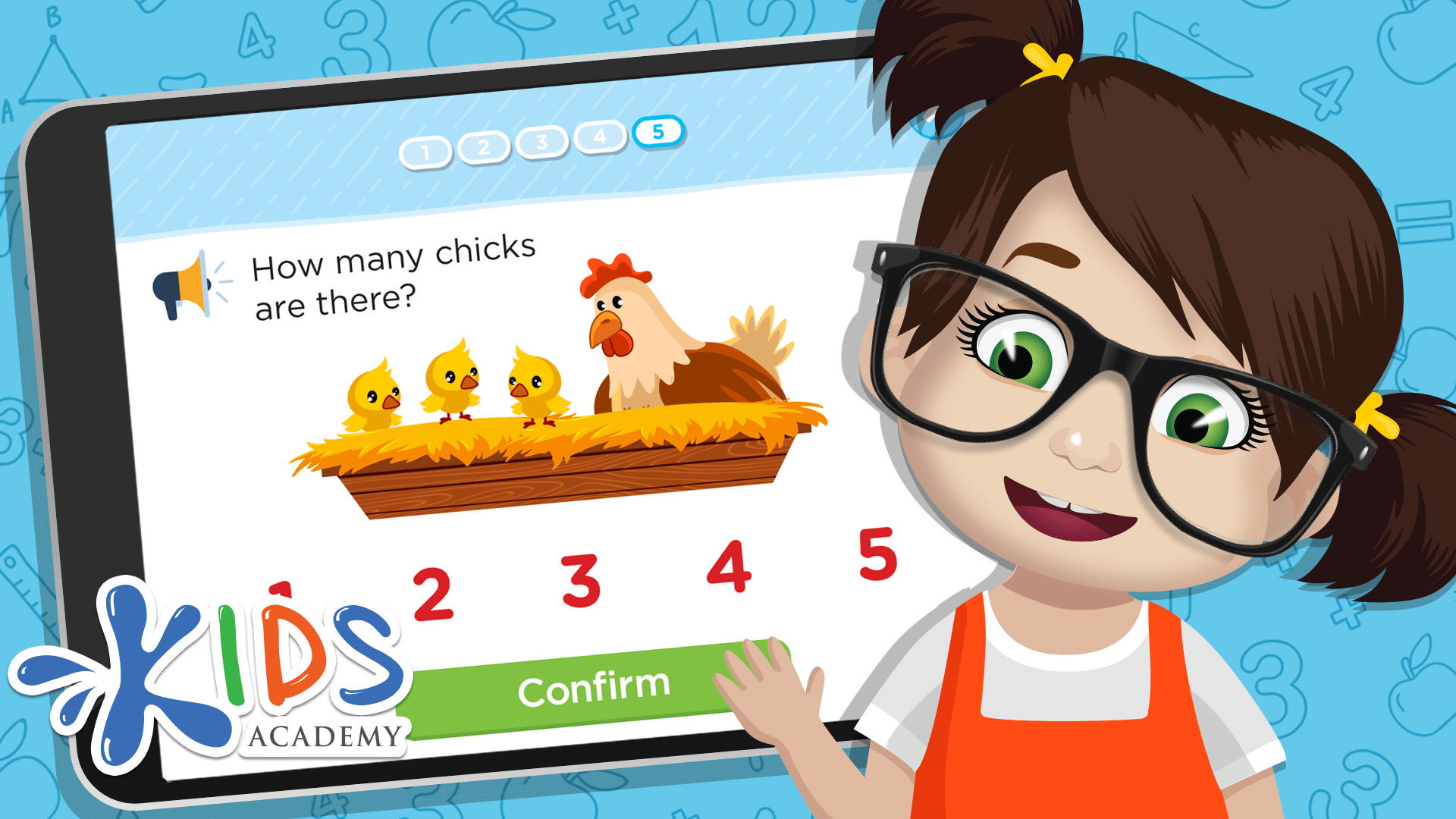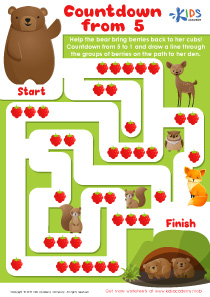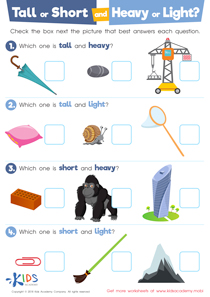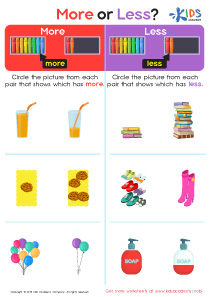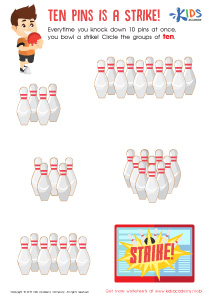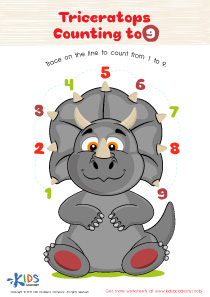Easy Patterns Worksheets for Grade K
6 filtered results
-
From - To
Discover our "Easy Patterns Worksheets for Grade K," designed to engage young learners in foundational math skills! These worksheets provide a fun and interactive way for kindergarten students to explore patterns through colorful visuals and simple exercises. Each activity encourages children to identify, extend, and create patterns using shapes, colors, and objects. Our user-friendly format makes it easy for educators and parents to incorporate these engaging tasks into their lesson plans. Boost your child's pattern recognition and critical thinking skills with our comprehensive collection, perfect for home and classroom use. Start their learning journey with joy and creativity today!
Easy patterns are foundational for young learners in kindergarten, serving as a gateway to critical thinking and problem-solving skills. For parents and teachers, understanding and employing easy patterns in the classroom or at home is essential for several reasons.
Firstly, recognizing patterns helps develop a child's cognitive abilities. It lays the groundwork for concepts in mathematics, enabling them to understand sequences and relationships. This skill is vital for later topics like addition, subtraction, and more complex mathematical reasoning.
Secondly, working with patterns enhances a child's ability to recognize relationships and order, fostering logical thinking skills. These are crucial not only for academics but also for everyday life, as children learn to identify trends and make predictions based on their observations.
Moreover, engaging with easy patterns fosters creativity and provides opportunities for hands-on learning. Activities involving patterns can incorporate art and music, making learning enjoyable and memorable.
Lastly, parents and teachers can encourage collaboration through group activities focused on patterns, promoting social interaction and communication skills. By prioritizing easy patterns in early education, adults are empowering children with essential skills that will benefit them throughout their academic journeys and beyond.
